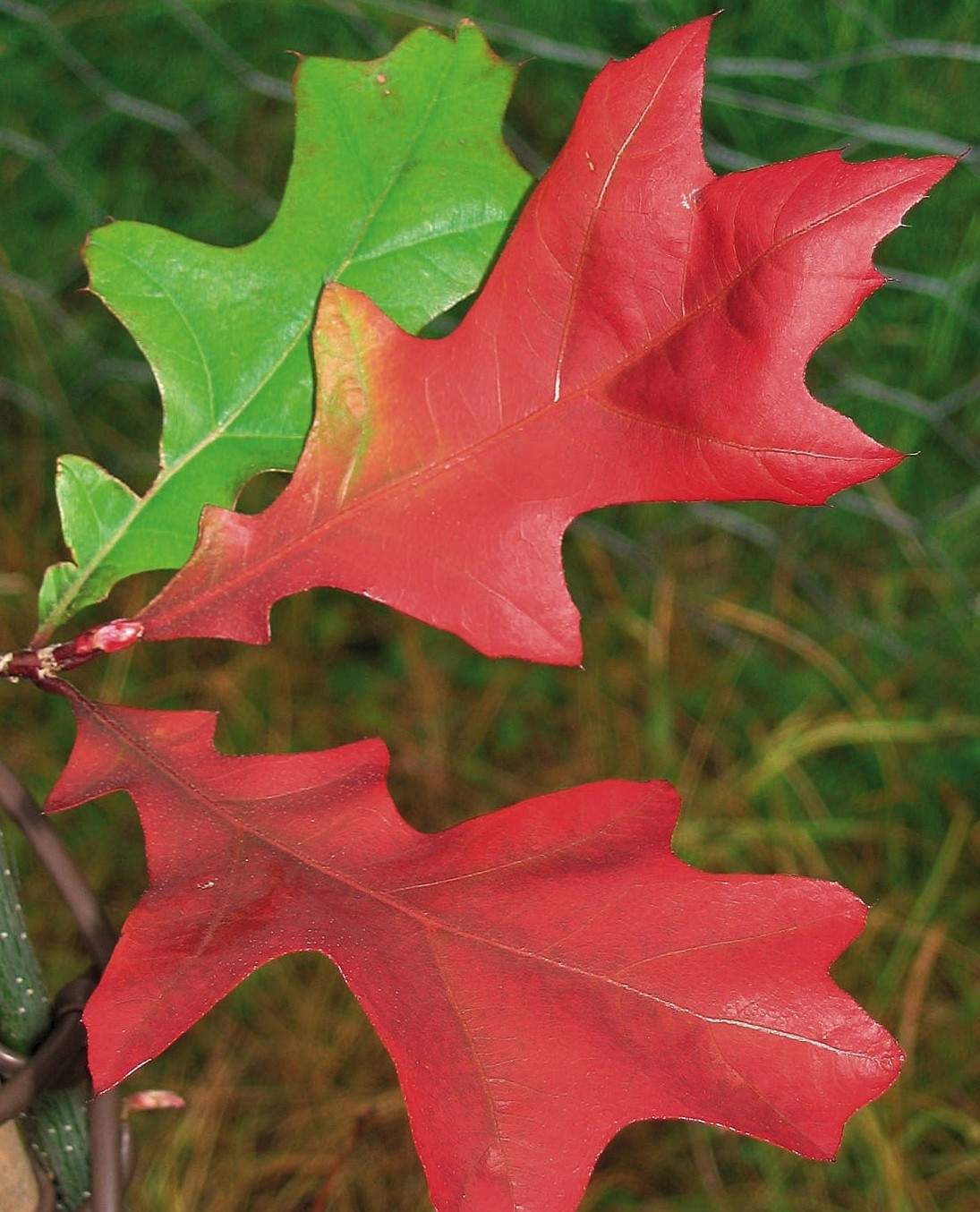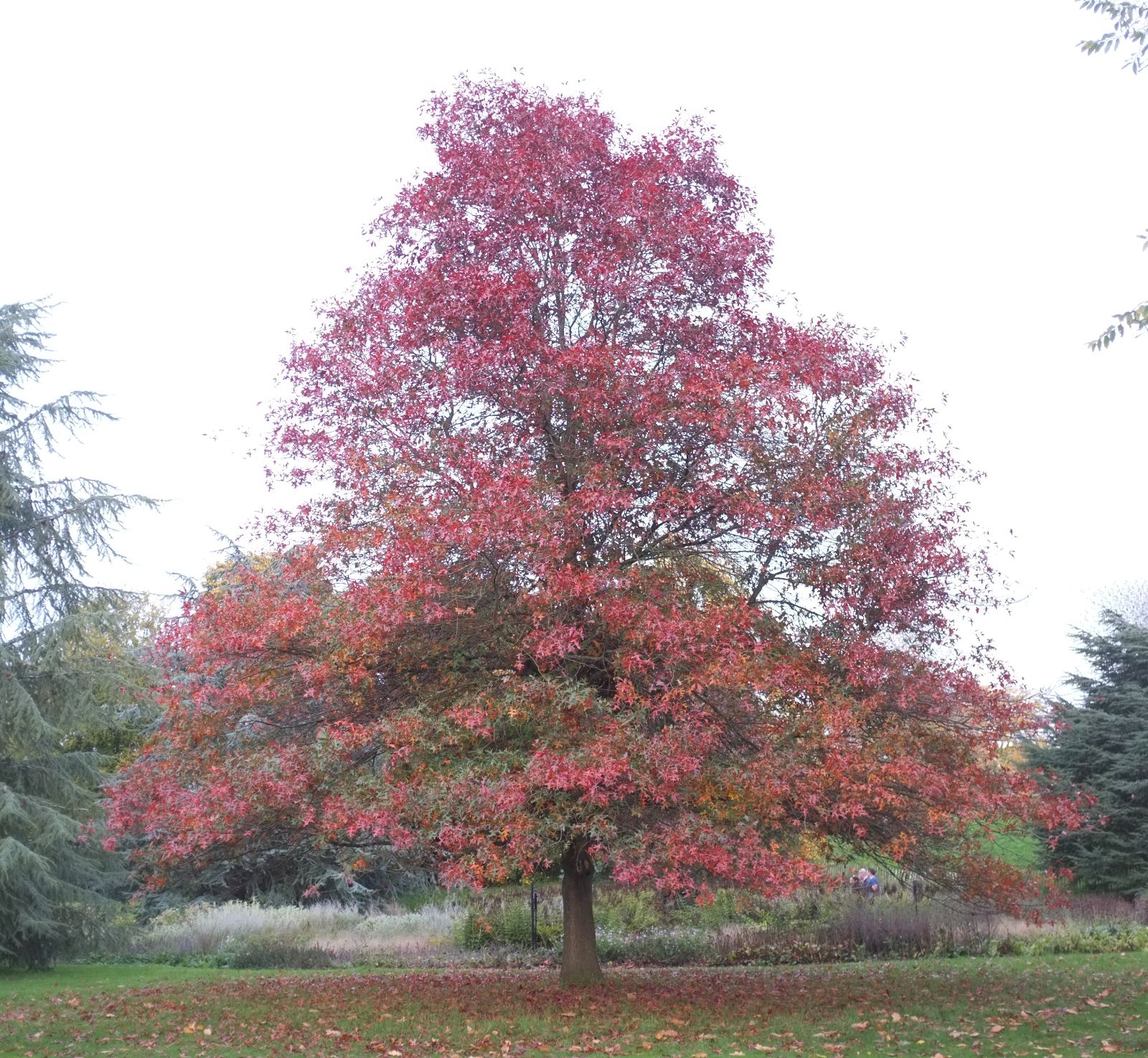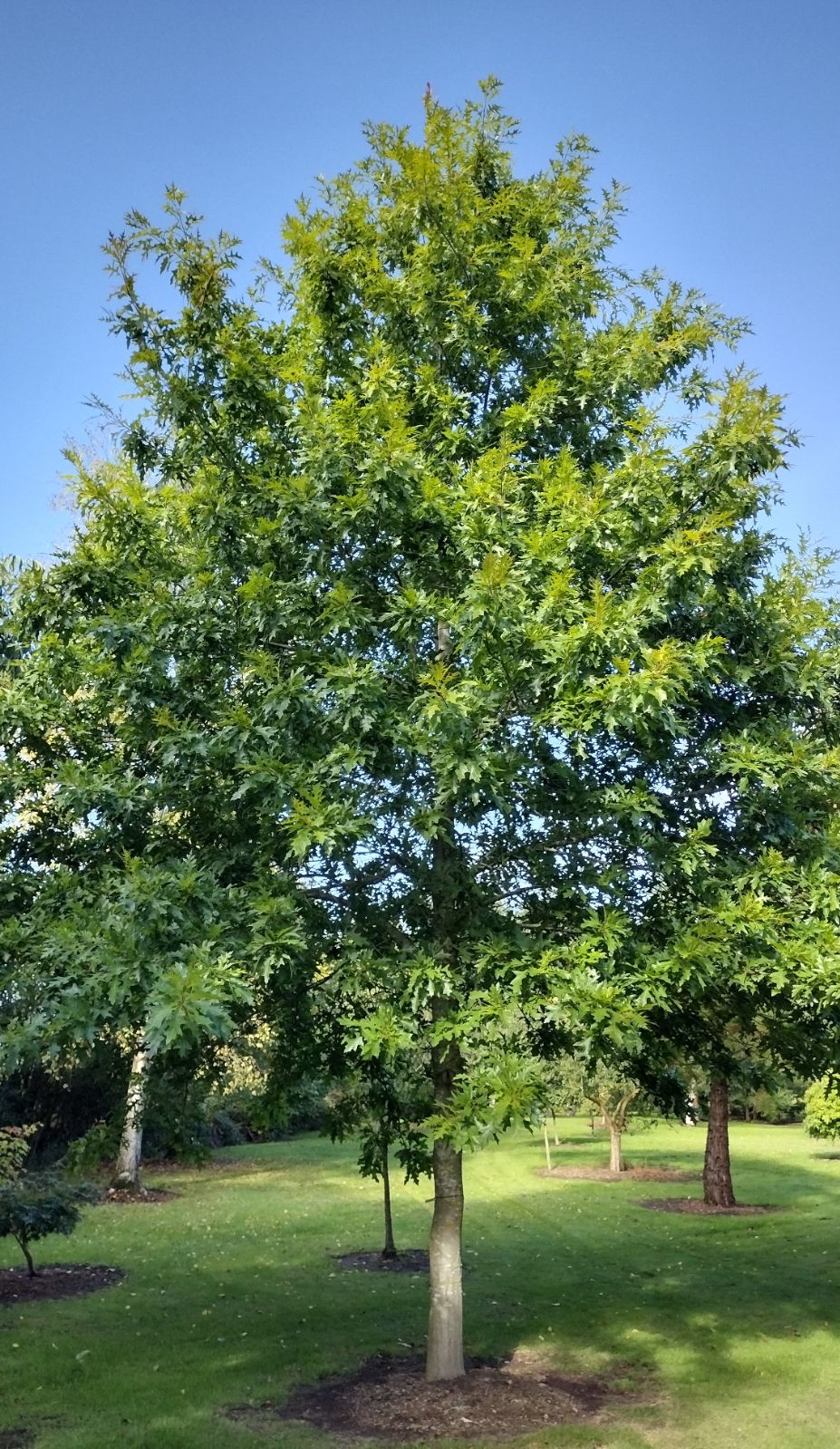Quercus texana
Sponsor
Kindly sponsored by
The Trees and Shrubs Online Oak Consortium
Credits
Article from New Trees by John Grimshaw & Ross Bayton
Recommended citation
'Quercus texana' from the website Trees and Shrubs Online (treesandshrubsonline.
Genus
- Quercus
- Subgen. Quercus, Sect. Lobatae
Common Names
- Texas Red Oak
- Nuttall's Oak
Synonyms
- Q. nuttallii E.J. Palmer
Infraspecifics
Other taxa in genus
- Quercus acerifolia
- Quercus acherdophylla
- Quercus acrodonta
- Quercus acuta
- Quercus acutifolia
- Quercus acutissima
- Quercus afares
- Quercus affinis
- Quercus agrifolia
- Quercus alba
- Quercus aliena
- Quercus alnifolia
- Quercus aquifolioides
- Quercus arizonica
- Quercus arkansana
- Quercus aucheri
- Quercus augustini
- Quercus austrina
- Quercus × auzendei
- Quercus baloot
- Quercus bambusifolia
- Quercus baronii
- Quercus bicolor
- Quercus brantii
- Quercus buckleyi
- Quercus canariensis
- Quercus canbyi
- Quercus candicans
- Quercus castanea
- Quercus castaneifolia
- Quercus cerris
- Quercus chenii
- Quercus chrysolepis
- Quercus coccifera
- Quercus cocciferoides
- Quercus coccinea
- Quercus conspersa
- Quercus crassifolia
- Quercus crassipes
- Quercus delavayi
- Quercus dentata
- Quercus deserticola
- Quercus dolicholepis
- Quercus douglasii
- Quercus dumosa
- Quercus durifolia
- Quercus eduardii
- Quercus ellipsoidalis
- Quercus emoryi
- Quercus engelmannii
- Quercus engleriana
- Quercus euboica
- Quercus eugeniifolia
- Quercus fabri
- Quercus faginea
- Quercus falcata
- Quercus floribunda
- Quercus frainetto
- Quercus franchetii
- Quercus fruticosa
- Quercus fusiformis
- Quercus gambelii
- Quercus garryana
- Quercus geminata
- Quercus georgiana
- Quercus germana
- Quercus gilliana
- Quercus gilva
- Quercus glabrescens
- Quercus glauca
- Quercus graciliformis
- Quercus gravesii
- Quercus griffithii
- Quercus grisea
- Quercus guyavifolia
- Quercus hartwissiana
- Quercus hemisphaerica
- Quercus × hispanica
- Quercus hondae
- Quercus hypargyrea
- Quercus hypoleucoides
- Quercus ilex
- Quercus ilicifolia
- Quercus imbricaria
- Quercus incana
- Quercus infectoria
- Quercus insignis
- Quercus ithaburensis
- Quercus kelloggii
- Quercus × kewensis
- Quercus kiukiangensis
- Quercus laceyi
- Quercus laevis
- Quercus lamellosa
- Quercus lanata
- Quercus lancifolia
- Quercus laurifolia
- Quercus laurina
- Quercus × leana
- Quercus leucotrichophora
- Quercus × libanerris
- Quercus libani
- Quercus lobata
- Quercus lobbii
- Quercus lodicosa
- Quercus longinux
- Quercus longispica
- Quercus look
- Quercus × ludoviciana
- Quercus macranthera
- Quercus macrocalyx
- Quercus macrocarpa
- Quercus macrolepis
- Quercus marilandica
- Quercus mexicana
- Quercus michauxii
- Quercus mongolica
- Quercus monimotricha
- Quercus montana
- Quercus morii
- Quercus muehlenbergii
- Quercus myrsinifolia
- Quercus myrtifolia
- Quercus nigra
- Quercus × numidica
- Quercus oblongifolia
- Quercus obtusata
- Quercus oglethorpensis
- Quercus oxyodon
- Quercus pagoda
- Quercus palmeri
- Quercus palustris
- Quercus pannosa
- Quercus parvula
- Quercus petraea
- Quercus phellos
- Quercus phillyreoides
- Quercus planipocula
- Quercus poilanei
- Quercus polymorpha
- Quercus pontica
- Quercus prinoides
- Quercus pubescens
- Quercus pyrenaica
- Quercus rehderiana
- Quercus reticulata
- Quercus robur
- Quercus rotundifolia
- Quercus rubra
- Quercus rugosa
- Quercus rysophylla
- Quercus sadleriana
- Quercus salicina
- Quercus sartorii
- Quercus × schneideri
- Quercus schottkyana
- Quercus semecarpifolia
- Quercus senescens
- Quercus serrata
- Quercus sessilifolia
- Quercus setulosa
- Quercus shumardii
- Quercus sinuata
- Quercus spinosa
- Quercus stellata
- Quercus stenophylloides
- Quercus suber
- Quercus subspathulata
- Quercus tarokoensis
- Quercus tatakaensis
- Quercus tomentella
- Quercus trojana
- Quercus tungmaiensis
- Quercus turbinella
- Quercus × turneri
- Quercus undulata
- Quercus utahensis
- Quercus utilis
- Quercus uxoris
- Quercus variabilis
- Quercus velutina
- Quercus virginiana
- Quercus vulcanica
- Quercus warburgii
- Quercus wislizenii
- Quercus xalapensis
Tree to 25 m, 2 m dbh. Branchlets reddish brown or grey and glabrous. Leaves deciduous, 7.5–20 × 5.5–13 cm, ovate to elliptic or obovate, upper surface glabrous, lower surface glabrous except for conspicuous tufts of tomentum in vein axils, five to seven secondary veins on each side of the midrib, margins with 4–11 oblong or distally expanded lobes, terminating in spiny bristles (9–24 in total), apex acute; petiole 2–5 cm long and glabrous. Cupule solitary and sessile; thin and goblet-shaped with a pronounced constriction at the base, 1.5–2.2 × 1–1.6 cm, outer surface glabrous, inner surface pubescent; scales acute with appressed tips. Acorn broadly ovoid to ellipsoid, with one-third to half of its length enclosed in the cupule, 1.5–2.6 cm long, stylopodium persistent. Flowering March, fruiting August to October of the following year (USA). Muller 1942, Nixon 1997. Distribution USA: Alabama, Arkansas, Illinois, Kentucky, Louisiana, Mississippi, Missouri, Tennessee, Texas. Habitat Floodplains between 0 and 200 m asl. USDA Hardiness Zone 5. Conservation status Least Concern. Illustration Nixon 1997, Sternberg 2004; NT698, NT754. Cross-reference K109. Taxonomic note The name Q. texana is often used erroneously for Q. buckleyi and Q. gravesii, and the narrow application of Q. texana Buckley to this taxon, which scarcely occurs in Texas, has been much bemoaned (Nixon 1997, Lamant & Sternberg 2000) and is not always accepted: Sternberg (2004), for example, uses the name Q. nuttallii.
The confusion over the nomenclature of three red oaks all of which have borne the name Quercus texana causes problems for dendrologists visiting arboreta, where any of the three may bear a label with that name! The tree at Kew thus marked is from a collection made in Louisiana by a team from the Morton Arboretum, and is correctly identified. It is currently about 8 m tall, from accession in 1986, and has formed a rounded, small tree with attractive, deeply lobed, toothed foliage. Sternberg (2004) notes that the leaves turn a good red, but often rather late in the season, and that they may be caught by frost before turning. With its wide range in the lower Mississippi valley this is an adaptable tree, and populations in southern Illinois are particularly hardy. Acorns collected from an isolated tree in New Madrid, Missouri have given uniform progeny with outstanding red autumn colour, but which also flush purple before turning green. Their leaves are relatively coarsely lobed for this species. These trees have been given the name ‘New Madrid’ by Guy Sternberg (pers. comm. 2006), but as the name applies to numerous seedlings, New Madrid Group is to be preferred. With their comparatively northern provenance, they are very hardy. The species is closely related to Q. palustris (Sternberg 2004), but is considered to be a more useful plant for landscaping in the southeastern United States (Dirr 1998).



